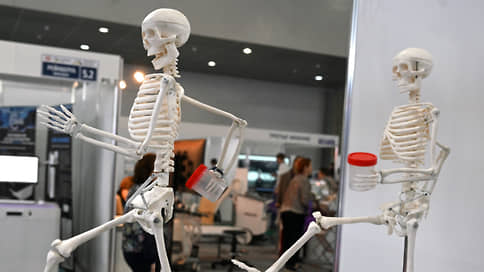The government wants technology from business, but companies develop it only to survive
[ad_1]

Russian companies adapted to the sanctions in different directions: they reduced costs and investments, changed suppliers, simplified services and products, and also increased innovation to overcome the problems that arose, a study by the Higher School of Economics (HSE) showed. The latter was accompanied by increased interaction with government agencies. The authorities, in turn, are ready to accommodate companies halfway, but the goals of the participants in the process differ. Thus, although technological innovations are recognized as a factor in business sustainability, their implementation was provoked by sanctions and was of a forced nature – which is acceptable in the scenario of catching up import substitution, but does not meet the tasks of an innovative economy and “sovereign” technological development.
The sanctions affected at least two-thirds of Russian enterprises, the negative effect of these restrictions prevailed for 53% of companies, only 7% assessed it positively, follows from the work “Strategy for Adaptation of Russian Companies to Sanctions in 2022” by the director of the Center for Structural Policy at the Higher School of Economics Yuri Simachev and his deputy Mikhail Kuzyk . In April 2023, Mr. Simachev already presented the first assessments of the impact of sanctions: technology companies included in the international market were more vulnerable – they managed to realize the potential of “easy” import substitution, but the problems of critical dependence on the global market remain.
In a new work, researchers showed four strategies for Russian companies to adapt to sanctions in 2022. The first, restrictive, involved reducing costs, investments, employees, and the range of goods and services – it is typical for non-innovative companies. In the second approach, companies did not reduce investments, but redirected them and simplified their products. Another behavior option is changing supply chains, searching for new suppliers of raw materials, materials and components, which was accompanied by changes in management and logistics. As the authors note, a change of suppliers is typical for firms with foreign participation, which are deeply integrated into global chains and are often assembly sites for foreign brands. Finally, the innovation strategy included the development of new products and technologies, the introduction of digital solutions, as well as the attraction of qualified personnel and the search for new markets.
Such response measures required assistance from the state: the innovation strategy, as the study showed, was accompanied by increased interaction between companies and the state.
The authors suggest that companies’ choice of adaptation strategies is related to their antecedents? dynamism and competitiveness. Thus, although companies with high export and innovation activity turned out to be more vulnerable to sanctions due to their inclusion in global chains and dependence on imported technologies, they also turned out to be better prepared to implement a development strategy. These conclusions are also confirmed by the study “Resilience of Russian companies in value chains to sanctions shock.” In it, Yuri Simachev and Deputy Director of the Center for Structural Policy Anna Fedyunina tried to determine what role enterprise resources and measures taken for adaptation play in sustainability. The authors recognize the presence of digital technologies in value chains as a key factor in the sustainability of enterprises. Such companies had more opportunities to change suppliers. However, while changing suppliers of raw materials, materials and components more often ensured an expansion of the range and market share of companies, replacing suppliers of technologies and services was not so successful and, as a rule, led to a loss of market share.
Let us explain that suppliers from “friendly” countries, including China, prefer to supply finished products and are not ready to share technologies. Developing your own will require significant time and financial costs, so the innovative activity of enterprises under sanctions is associated with seeking help from the state. The authorities, in turn, are rolling out large-scale plans for innovative development, launching projects of “technological sovereignty” and trying to bring science and industry closer together (see Kommersant on September 29).
The problem, however, lies in the conflicting interests of the participants in this technological process: if the government program is designed both for the accelerated patching of holes (the development of critical, that is, technologies that are absent in the Russian Federation), and for the parallel development of new technologies in global practice, the parallel activity of companies is almost completely is due to the influence of sanctions – and their intentions are limited to catching up import substitution, which contradicts the logic of innovation. Companies that are closed to the domestic market, according to the study, do not take any measures at all – their low level of competition is successfully consistent with the idea of simplifying products, and the motivation for innovation in the conditions of already increased demand after the departure of foreign competitors is de facto absent.
Let us recall that the government’s plans to stimulate the technological development of private business (including “end-to-end” projects and technologies) were also significantly revised due to sanctions restrictions (see Kommersant on April 10), and the details of this work are discussed mainly non-publicly. however, even before the start of the Russian military operation in Ukraine, it was hampered by the reluctance of business to take on the risks associated with investments (see “Kommersant” dated April 7, 2021). In the new reality, the risks have obviously only grown, but investments in technology (including in projects of “technosovereignty” and modernization of production through the transition to the best available technologies, BAT) are now becoming a way to preserve excess profits earned in the empty domestic market from their withdrawal by the state by additional taxes and payments. The extent to which this new configuration will be able to push Russian business to invest in “technological sovereignty” is still unknown. “Kommersant” will monitor developments.
[ad_2]
Source link






